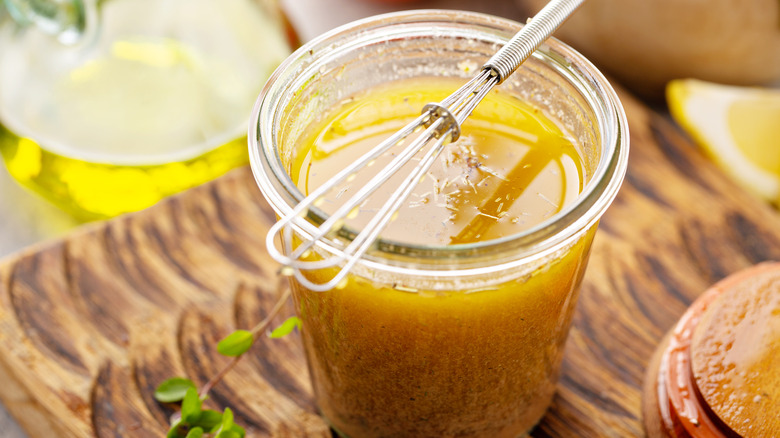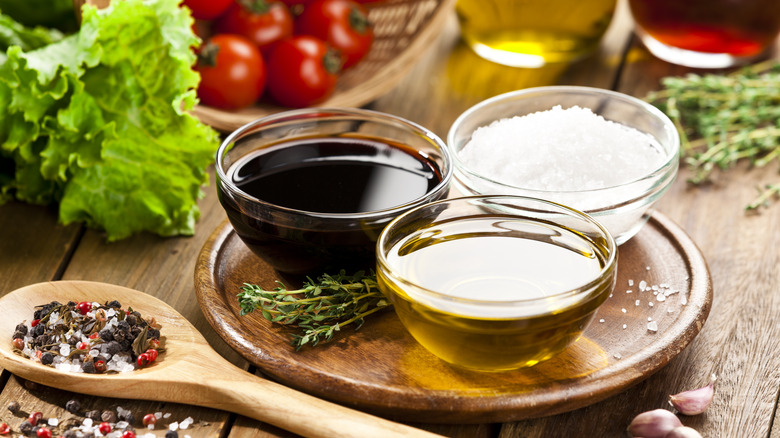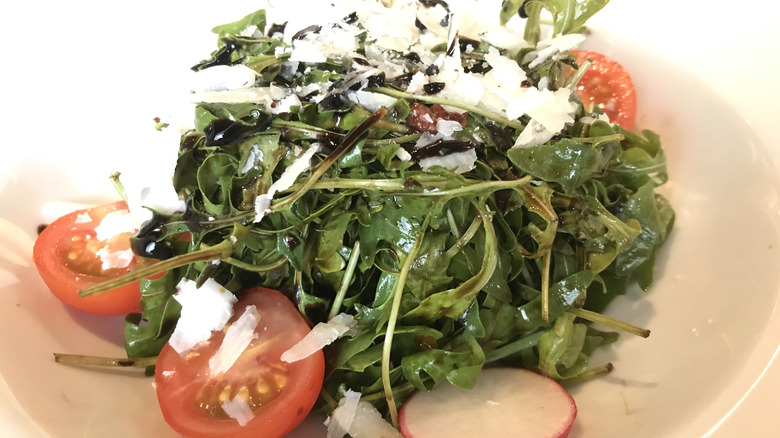The French Golden Ratio For Vinaigrette, And When You Should Use It
Homemade vinaigrette is the easiest way to elevate a salad, sandwich, or roast beyond basic lunch fare and into something more exciting. But vinaigrettes are tricky, prone to separation, and not always intuitively concocted. Paying attention to the ratio of your vinaigrette is important to making sure it tastes like a chef made it, not like your five-year-old did.
Vinaigrettes made in the traditional French style are made using a 3:1 ratio of oil to vinegar. This is the version taught in contemporary culinary schools and widely used throughout France. However, many modern chefs use a 1:1 oil to vinegar ratio in their vinaigrettes, especially when other sweet or spicy ingredients, such as mustard or honey, are used.
The crucial distinction here lies in the balance. It's easy for the sharpness of vinegar to overpower a dish, so oil, sweeteners, and other flavoring agents can be used to add depth and complexity to the sour tang of a vinaigrette.
When to use a 3:1 ratio
Vinaigrettes made with a classic French 3:1 ratio will be less sour and more unctuous, thanks to the added oil in the mix. They're great for dressing dishes where you don't want to overpower the flavor of the ingredients. A salad made with tender greens, such as romaine or butter lettuce, will fare better if you aren't assaulting them with intense acidity, making it a good match for this type of dressing.
Vinaigrettes with less vinegar also leave room to splurge on a nice oil, such as walnut oil or truffle oil, whose flavors will shine through in a salad with a 3:1 ratio vinaigrette. (You could even use brown butter as a replacement for the oil.)
Gentler vinaigrettes are also great as part of a marinade or dressing for roast or grilled meat and veggies, especially sweeter proteins and produce such as white fish, shellfish, carrots, squash, potatoes, or young asparagus.
When to use a 1:1 ratio
A vinaigrette made using a 1:1 ratio will be much more acidic than one with more oil, so it's good to use if you are working with a recipe that's very bitter.
The acidity of a modern vinaigrette will cut through the bitterness of an arugula salad, but it also makes a wonderful addition to meat-heavy dishes, such as ribs or a steak sandwich. Just be sure to add the vinaigrette right before the meat is ready to eat, because too long of a time spent sitting in acid could affect the texture of your meat.
Some chefs even push past this ratio to a reverse 1:3 ratio of oil to vinegar, playing around with sweeteners such as fruit, maple syrup, or agave to balance out the flavor. Fish sauce or mushroom powder can be used to add a level of umami. And a spicy element such as mustard, peppers, or fresh alliums can make the tang of the seasoning deeper and less shocking.



